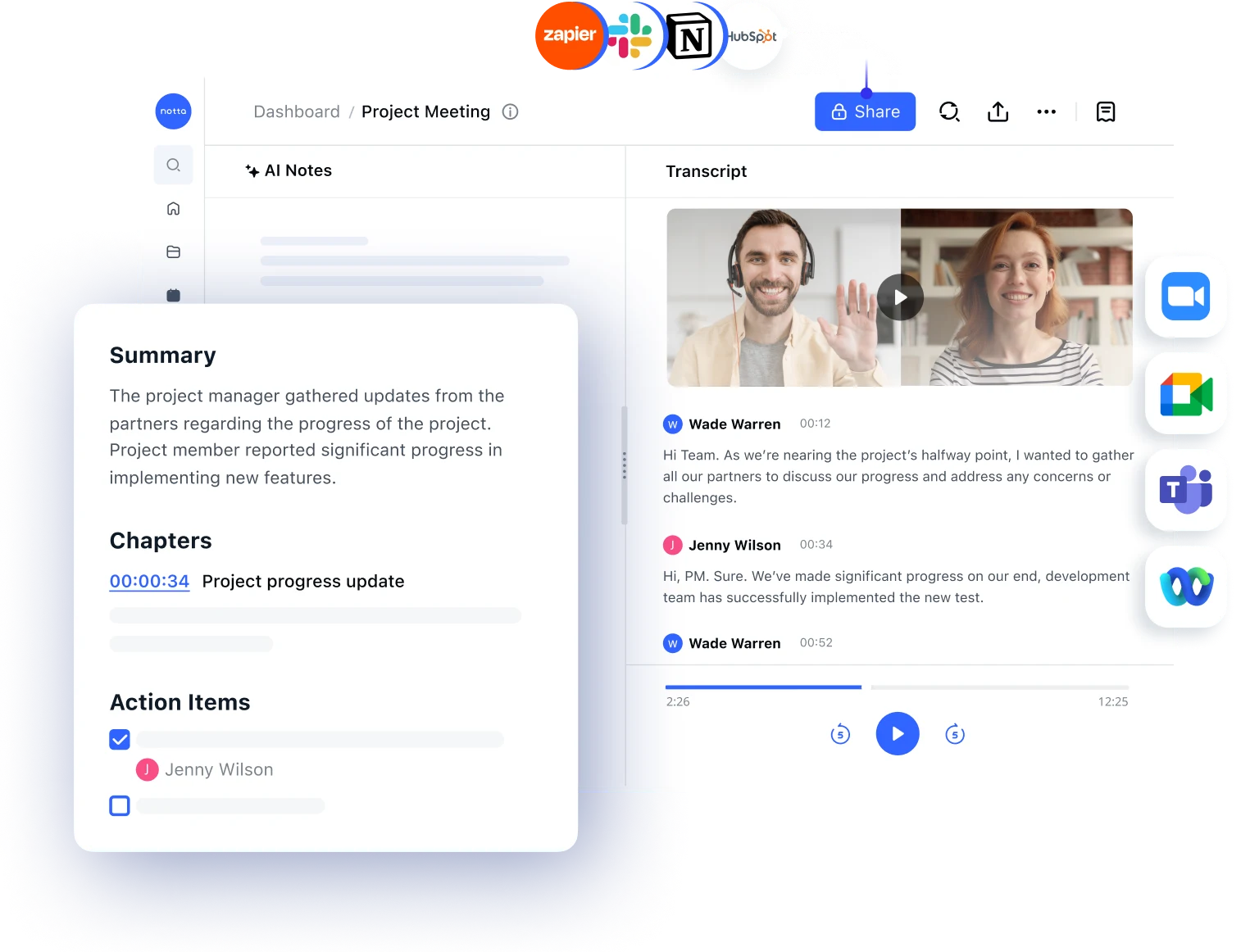In a world driven by virtual interactions and digital connections, the value of face-to-face encounters should not be underestimated. The introductory meeting, that initial exchange between two individuals stepping into the realm of the unknown, holds immense potential for forging new relationships and opening doors to unforeseen opportunities.
In this post, we will discuss what an introductory meeting is, shed light on its importance, and provide some tips that will make it more enjoyable for everyone in attendance.
What is an introductory meeting
An introductory meeting is a first-time meeting between two or more people who are not familiar with each other to introduce the individuals, establish a connection, and potentially explore future opportunities for collaboration or relationship-building.
An introduction meeting can happen in various situations, such as when starting a new job, meeting a potential business partner or client, attending a networking event, or conducting a sales demo.
Based on the number of attendees, we can divide such meetings into one-on-one and group introduction meetings. One-on-ones are used for more focused and personalized conversation, while group sessions offer a chance to interact with multiple people at once and can be more dynamic.
What are the benefits of introduction meetings
Introduction meetings offer several benefits that can have a significant impact on personal, professional, and business growth.
1. Relationship building
When you meet someone for the first time, it sometimes seems difficult to know what to say or how to act. Introduction meetings give you a chance to become more familiar with everyone in the group. You can discover each other's interests, which can make future interactions more comfortable.
2. Expanded network
Meeting new people expands your network, introducing you to individuals from diverse backgrounds, industries, and perspectives. This can lead to new connections, partnerships, and access to valuable resources.
3. Improved collaboration
When each person gets to know others more intimately, the group will gain trust in one another. As you work to improve relationships, you’ll end up building a better sense of teamwork.
When people who previously didn't know one another begin to feel like a team, they are more likely to work together and support each other. Overall, this helps everyone find common ground and build rapport.
Capture every detail with AI meeting notes
Notta offers the most integrated AI meeting notes, summaries, and action items so nothing gets missed.
How to run a successful introductory meeting
Are you tasked with running an introductory meeting? Whether it's for a new team, a new project, or a new client, the success of your first meeting can set the tone for the entire relationship. To help you ensure that your introductory meeting is a success, we've put together some tips and best practices that you can follow.
1. Set the agenda
Before the meeting, create an agenda that outlines what you want to cover. This will help keep the meeting on track and ensure that you cover all of the important points. Be sure to share the agenda with all attendees before the meeting so they know what to expect.
2. Introduce yourself
Start the meeting by introducing yourself, be sure to include your name, job title, and company. If you're introducing someone else, take a moment to explain why they're joining the meeting and a few details about their role.
3. Use icebreakers
If you run into trouble getting everyone relaxed and comfortable talking, try using icebreakers.
Here are a few examples of meeting icebreakers you can use:
One lie and two truths: Each person tells three things about themselves. Two of the items should be true aspects of their lives. One should be a lie. The others have to guess which one is the lie.
Name game: Go around the room and have each person say their name, followed by an interesting fact about themselves.
4. Make it interactive
Using the Inform/Excite/Empower/Involve formula, you can easily run interactive and engaging introduction meetings.
Inform: Kick your meeting off by telling attendees the benefits of getting to know one another. Inform them about the purpose of the meeting and what they can expect to accomplish together.
Excite: Get everyone excited about the meeting by sharing your enthusiasm. Remain upbeat at all times. Let everyone know that this is an opportunity to learn more about each other.
Empower: Empower attendees by allowing them to share their own stories and experiences. This is their chance to shine.
Involve: You can further the feelings of empowerment via active listening. Involve everyone in the meeting by asking questions and encouraging conversation. Make sure that everyone has a chance to speak up.
5. End with a summary and next steps
At the end of the meeting, take a few minutes to summarize what everyone discussed. Establish the next steps. Doing this will help ensure everyone remains on the same page and knows what they need to do moving forward.
By following these tips, you can make sure your introduction meeting is successful and sets the tone for a productive working relationship.

6. Follow up
Don't forget to follow up after the meeting. Send a thank you email or note to the attendees. It will show that you appreciated their time and look forward to working with them in the future.
Typical introductory meeting agenda
If you're not sure what to discuss during a one-on-one introductory meeting, here is an informal agenda to use.
1. Introduction and overview of the meeting's purpose
Start by telling the other person your name. Tell them a couple of relevant facts about your organization. Then, explain the purpose of the meeting. For example, are you looking to fill an important position? Are you selling a product?
2. Icebreaker
Adjust icebreaker questions to fit the situation. For example, if running a sales call, you might ask questions about your prospect’s background or how they got interested in the topic. Or, if you’re a manager conducting a job interview, you can use this time to ask a couple high-level personal questions before diving into the meeting’s agenda.
3. Share your background
After you've broken the ice, it's time to start talking about your background. Share a little about your experience. It will help the other person understand your perspective and why you're passionate about the project.
4. Goal discussion
The next step is to discuss your goals. Talk through goals in a way that helps the other person understand how working together is advantageous for both parties.
What do you hope to accomplish by working with this person?
Are there any specific skills or knowledge you’re looking for in a job applicant?
What goals do they hope to achieve?
If in a sales presentation, what frustrations do they currently experience?
Self-introduction in meeting examples
Getting your self-introduction right can set everyone up for a successful introductory meeting. You need to take into account the type of meeting you're about to lead. Consider whether it's a job interview, a sales demo, an investor pitch, or a sales meeting.
Here are a few examples of how you can introduce yourself.
Job interview
"Hi, my name is _______ and I'm the manager of the _______ department.
I'm here today to interview you for the _______ position.
Before we begin, I just wanted to take a moment to introduce myself and tell you a bit about my background.
I've been with the company for ______ years.
I'm excited to get to know you and learn more about your experience.
Now, why don't we start with you telling me a bit about your background?"
Sales demo
"Hi everyone, my name is _______ and I'm the sales manager for _______.
I'm here today to give you a demo of our new product, _______.
Before we get started, I want to take a moment to introduce myself and tell you a bit about my background.
I've been in sales for ______ years and I have experience in ______.
I'm excited to show you our new product and answer any questions you might have."
Investor pitch
"Hi, my name is ____. We're here to discuss the __ project."
I'd like to kick things off by telling you a bit about my background. I started as an intern, and then worked my way up to the position of.
I'm excited to tell you more about our startup and answer any questions you might have."
Sales meeting
"Hi everyone, as manager of the sales department, I'd like to welcome you to our quarterly sales meeting.
I'll be giving a brief overview of our department's performance over the past quarter.
But since we have new people since our last meeting, I wanted to take a moment to introduce myself and tell you a bit about my background.
I've been with the company for ______ years and I have experience in ______.
I'm excited to share our department's progress with you and answer any questions you have about our next quarter."
What to avoid while running an introduction meeting
Don’t forget to communicate before the meeting. Provide all participants with details about the meeting, such as the start time and Zoom link.
Avoid talking about controversial topics or anything that might offend someone. You want everyone to feel comfortable and safe during the meeting.
Don’t mismanage time. Starting late, for example, creates frustration in other attendees. As well, keep to your agenda so you don’t waste time during the meeting.
Don’t dominate the conversation. Make sure to give everyone a chance to speak and share their thoughts.
Efficient, productive meetings with Notta
Let Notta worry about the details so that you can focus on the meeting. Accurate, real-time meeting notes at your fingertips.

